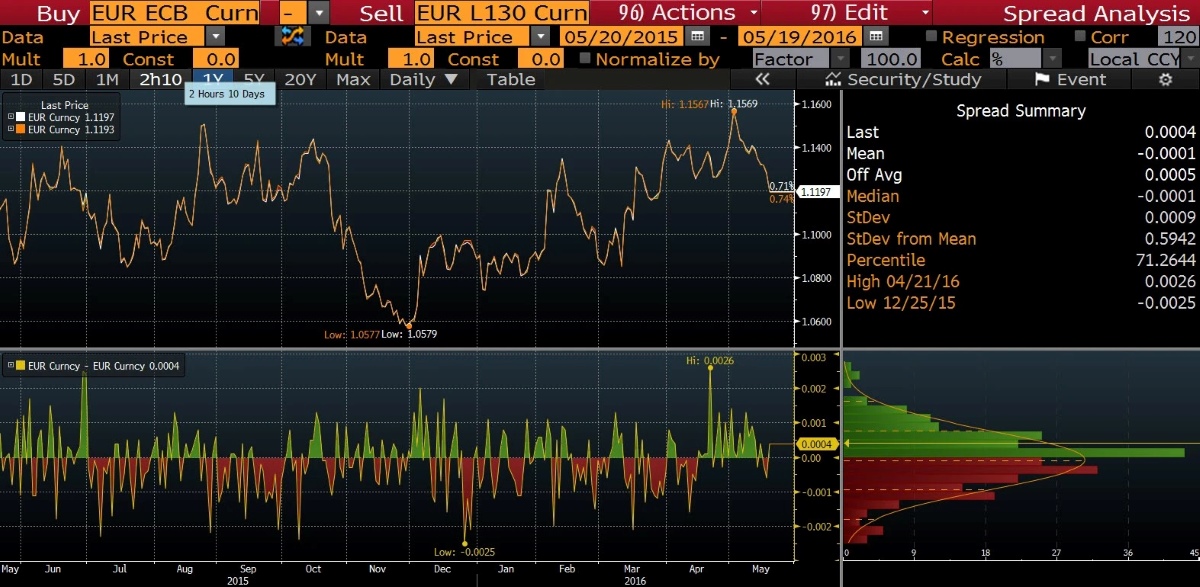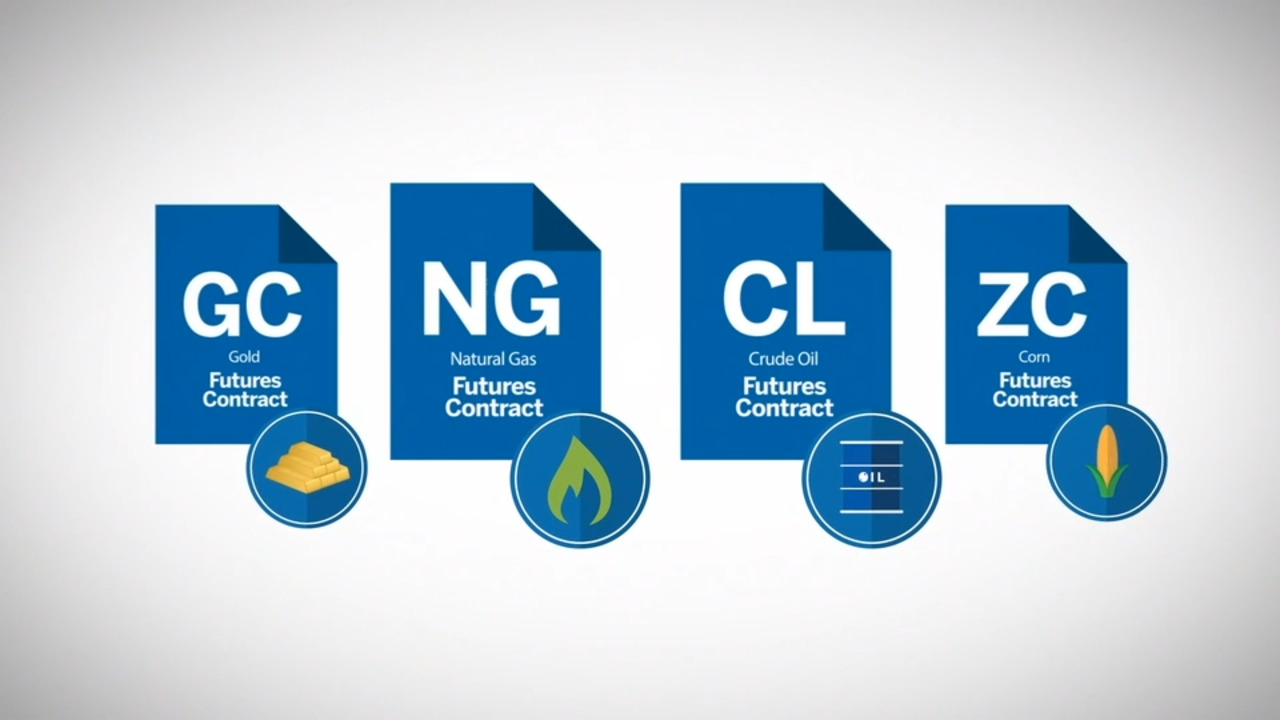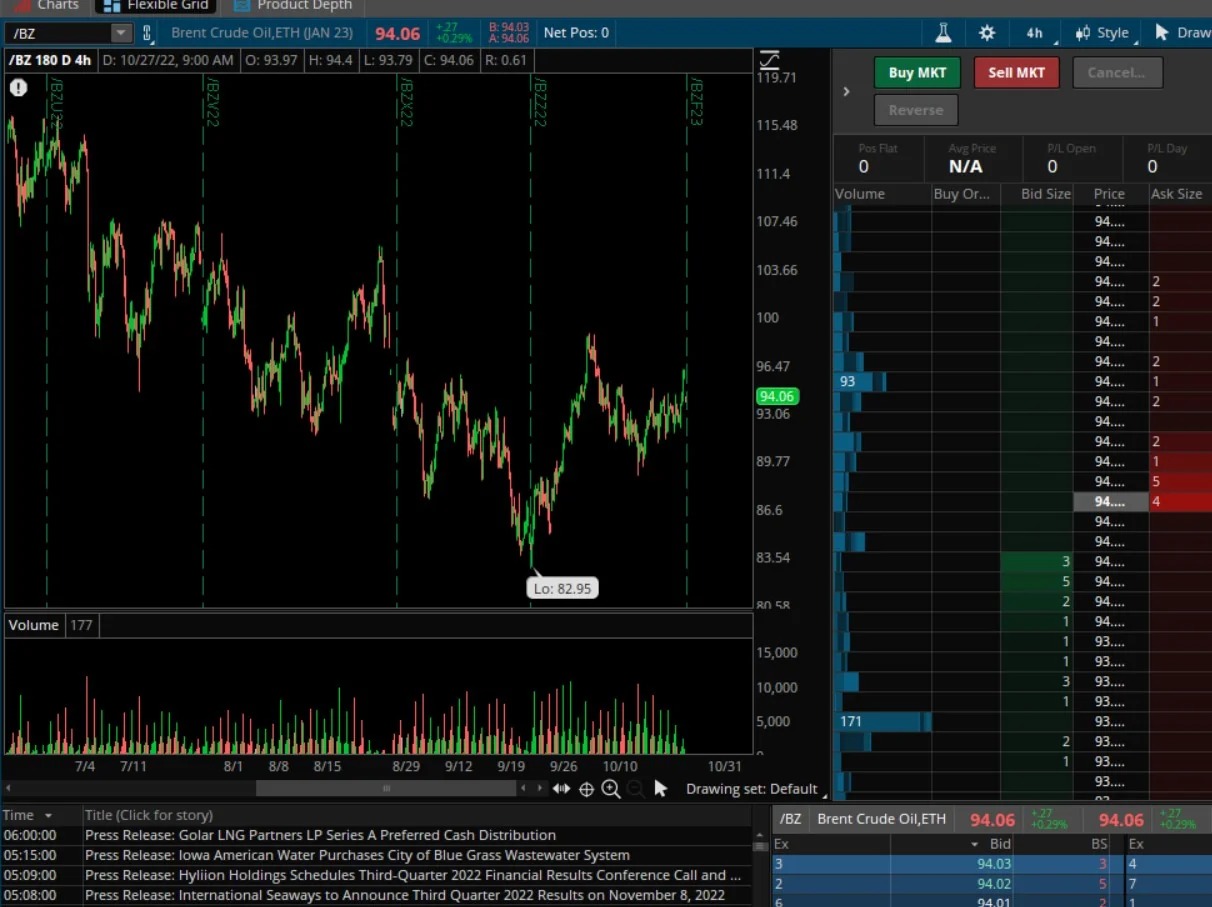

Finance
Where Do I Report Losses On Futures Contracts
Published: December 23, 2023
Reporting losses on futures contracts is essential for proper financial management. Learn where and how to report your losses in the world of finance.
(Many of the links in this article redirect to a specific reviewed product. Your purchase of these products through affiliate links helps to generate commission for LiveWell, at no extra cost. Learn more)
Table of Contents
- Introduction
- Understanding Futures Contracts
- Reporting Losses on Futures Contracts
- Reporting Losses on Internal Revenue Service (IRS) Form 6781
- Reporting Losses on Schedule D
- Reporting Losses on Form 8949
- Reporting Losses for Wash Sales
- Reporting Losses for Section 1256 Contracts
- Reporting Losses for Mark-to-Market Accounting
- Conclusion
Introduction
When investing in futures contracts, it’s important to understand that losses are a possibility. Whether due to market fluctuations, unexpected events, or other factors, losses can occur. As a trader, it’s crucial to know how to report these losses to ensure compliance with tax regulations and to potentially offset gains in other areas.
Futures contracts are derivative financial instruments that allow traders to buy or sell an asset at a predetermined price and date in the future. These contracts are widely used in various industries, including finance, agriculture, and energy. While they carry the potential for significant profits, they also come with the risk of losses.
When it comes to reporting losses on futures contracts, understanding the appropriate forms and guidelines is essential. This article will guide you through the process, ensuring that you have the necessary knowledge to accurately report your losses and potentially minimize your tax liability.
It’s important to note that tax regulations can be complex and subject to change, so seeking the guidance of a qualified tax professional is always a wise decision. However, having a basic understanding of the reporting requirements can help you navigate the process more effectively.
In this article, we will explore different aspects of reporting losses on futures contracts, including the necessary forms and schedules used for reporting, as well as specific considerations related to wash sales, section 1256 contracts, and mark-to-market accounting.
By the end of this article, you should have a comprehensive understanding of how to report losses on futures contracts, enabling you to fulfill your tax obligations and potentially mitigate any losses through tax planning strategies.
Understanding Futures Contracts
Before delving into reporting losses on futures contracts, it’s crucial to have a solid understanding of what these contracts entail. Futures contracts are legally binding agreements between two parties to buy or sell an asset at a predetermined price and date in the future. These assets can include commodities, currencies, stocks, or other financial instruments.
One key characteristic of futures contracts is their standardized nature. Exchanges establish uniform terms and conditions, including the contract size, expiration date, and contract specifications. This standardization ensures a transparent and efficient trading environment.
Traders can take two positions in futures contracts: long or short. Those taking a long position agree to buy the asset at a future date, while those taking a short position agree to sell it. The difference in price between the contract’s initial value and its value upon expiry determines the traders’ profit or loss.
It’s important to note that most futures contracts are settled through cash rather than physical delivery of the underlying asset. This means that traders typically close out their positions by offsetting them before the contract’s expiration. However, in some cases, physical delivery may occur.
Futures contracts are commonly used as risk management tools by hedgers who seek to protect themselves against adverse price movements. For example, a farmer may use futures contracts to lock in a price for their crop before harvest, safeguarding against potential price declines. On the other hand, speculators enter into futures contracts with the goal of profiting from price fluctuations.
As a trader, it’s important to be aware of the risks associated with futures contracts. The leverage inherent in these contracts can amplify both profits and losses. Additionally, market conditions, supply and demand factors, and unexpected events can cause rapid price movements, potentially resulting in significant gains or losses.
With this understanding of futures contracts, we can now move on to discussing how to report losses on these contracts to ensure compliance with tax regulations and potentially minimize your tax liability.
Reporting Losses on Futures Contracts
When it comes to reporting losses on futures contracts for tax purposes, it’s important to follow the guidelines set forth by the Internal Revenue Service (IRS) in the United States. Proper reporting allows traders to offset gains in other areas and potentially reduce their tax liability.
The primary form used for reporting losses on futures contracts is IRS Form 6781, “Gains and Losses from Section 1256 Contracts and Straddles.” This form is specifically designed for reporting gains and losses from futures contracts, options on futures contracts, and certain other financial instruments.
On Form 6781, you will need to provide information regarding the contracts traded, including the contract description, the date acquired, the date sold or closed, the sale price or closing value, and the cost or basis. This information is necessary to calculate the net gain or loss on the contracts.
It’s important to note that Form 6781 has specific instructions for reporting transactions involving options on futures contracts, as these carry their own unique tax treatment. Be sure to carefully review the instructions and seek guidance from a tax professional if you are unsure about any aspect of reporting options on futures contracts.
In addition to Form 6781, you may also need to complete other tax forms to report your losses on futures contracts. Two common forms are Schedule D and Form 8949.
Schedule D, “Capital Gains and Losses,” is used to report overall capital gains and losses from various investment activities, including futures contracts. On this form, you will summarize the net gains or losses from Form 6781 and other investment activities. It’s essential to include accurate and detailed information to ensure the correct calculation of capital gains or losses.
Form 8949, “Sales and Other Dispositions of Capital Assets,” is used to provide a detailed breakdown of individual transactions that contribute to the net gains or losses reported on Schedule D. You will need to report the dates of acquisition and sale, the proceeds, the cost or other basis, and the resulting gain or loss for each transaction involving futures contracts.
It’s crucial to maintain accurate records of your transactions, including trade confirmations, account statements, and any other relevant documentation. These records will serve as evidence in case of any audit or questions from the IRS.
Furthermore, it’s important to recognize that certain specialized tax treatments apply to specific situations, such as wash sales, section 1256 contracts, and mark-to-market accounting. Let’s explore these considerations in the following sections.
Reporting Losses on Internal Revenue Service (IRS) Form 6781
When it comes to reporting losses on futures contracts for tax purposes, the Internal Revenue Service (IRS) has specific guidelines in place. The primary form used for reporting gains and losses from futures contracts is Form 6781, titled “Gains and Losses from Section 1256 Contracts and Straddles.”
On Form 6781, you will report detailed information about the futures contracts you traded, including the contract description, date acquired, date sold or closed, sale price or closing value, and cost or basis. These details enable the calculation of your net gain or loss on the contracts.
To report losses on Form 6781, you will enter the sale price or closing value of the contracts as a negative number in the appropriate column. Additionally, you will report the cost or basis of the contracts as a positive number. By subtracting the cost or basis from the sale price or closing value, you will determine the net loss for each contract.
If you have multiple contracts, you can sum up the net losses to calculate the total overall loss. However, it’s important to remember that the IRS imposes certain limitations on the amount of losses that can be deducted in a given tax year.
Form 6781 also contains specific instructions for reporting transactions involving options on futures contracts. Options carry their own unique tax treatment, so it’s essential to review the instructions carefully and seek guidance from a tax professional if you have any doubts.
Once you have completed Form 6781, you will transfer the net gain or loss amount to your individual income tax return. Typically, this amount is transferred to Schedule D, which is used to report capital gains and losses from various investment activities.
Remember, accuracy and attention to detail are crucial when reporting losses on Form 6781. Keeping thorough records of your transactions, including trade confirmations and account statements, is essential. These records will serve as evidence in case of any audit or questions from the IRS.
It’s important to note that tax regulations and reporting requirements can be complex and subject to change. If you have any uncertainties or complex situations related to reporting losses on futures contracts, it’s always advisable to consult with a qualified tax professional who can provide guidance based on your specific circumstances.
Reporting Losses on Schedule D
When reporting losses on futures contracts for tax purposes, you may also need to complete Schedule D, which is used to report capital gains and losses. Schedule D provides an overview of your overall capital gains and losses from various investment activities, including futures contracts.
To report your losses on Schedule D, you will need to summarize the net gains or losses from IRS Form 6781, “Gains and Losses from Section 1256 Contracts and Straddles.” This means that the net loss calculated on Form 6781 will be carried over to Schedule D.
On Schedule D, you will provide a summary of your capital gains and losses, including both short-term and long-term transactions. Short-term transactions refer to those held for one year or less, while long-term transactions are held for more than one year.
For reporting losses on futures contracts, you will enter the net loss amount from Form 6781 on Schedule D. If you have multiple transactions, you can sum up the net losses to calculate the total overall loss.
It’s essential to provide accurate and detailed information on Schedule D to ensure the correct calculation of your capital gains or losses. You will need to include the description of the assets (futures contracts in this case), the dates of acquisition and sale, the proceeds, the cost or other basis, and the resulting gain or loss for each transaction.
In addition, Schedule D requires you to consider any capital loss carryovers from previous years, as well as any wash sales that may impact the calculation of your losses. Wash sales occur when you sell or dispose of a security, including futures contracts, at a loss and purchase a substantially identical security within 30 days before or after the sale. These transactions require special treatment and adjustments.
It’s important to note that Schedule D provides separate sections for reporting short-term and long-term capital gains and losses. As futures contracts are typically considered short-term investments, you will likely report the losses in the short-term section.
It’s crucial to maintain thorough and accurate records of your transactions, including trade confirmations, account statements, and other relevant documentation. These records will be necessary to support your capital gains and losses reported on Schedule D.
Remember, tax regulations and reporting requirements can be complex, and it’s always wise to consult with a tax professional to ensure compliance and optimize your tax strategy based on your individual circumstances.
Reporting Losses on Form 8949
Form 8949, “Sales and Other Dispositions of Capital Assets,” is another tax form that you may need to complete when reporting losses on futures contracts. Form 8949 provides a detailed breakdown of individual transactions that contribute to the net gains or losses reported on Schedule D, which is used to report capital gains and losses.
When reporting losses on Form 8949, you will provide specific information for each transaction involving futures contracts. This includes the dates of acquisition and sale, the proceeds from the sale, the cost or other basis, and the resulting gain or loss for each transaction.
Form 8949 requires you to categorize your transactions into two main categories: short-term transactions and long-term transactions. Similar to Schedule D, short-term transactions refer to those held for one year or less, while long-term transactions are held for more than one year.
To report your losses, you will enter the details of each transaction involving futures contracts in the appropriate section of Form 8949. It’s important to provide accurate and complete information to ensure the correct calculation of your gains or losses.
Additionally, you may need to include any adjustments or special considerations on Form 8949. For example, if you had any wash sales involving futures contracts, you need to make appropriate adjustments to reflect the disallowed losses due to wash sale rules.
Once you have completed Form 8949, you will transfer the net losses for each category (short-term and long-term) to Schedule D. On Schedule D, you will summarize the net losses from Form 8949, along with any other capital gains or losses from different investment activities.
It’s important to note that maintaining accurate and detailed records of your transactions is crucial when completing Form 8949. These records include trade confirmations, account statements, and any other relevant documents that support the information reported on the form.
While Form 8949 may seem daunting, it provides a structured approach to reporting your gains and losses from futures contracts and other capital assets. However, given the complexity of tax regulations and the potential impact on your overall tax liability, it’s highly recommended to consult with a tax professional who can provide guidance based on your specific circumstances.
Reporting Losses for Wash Sales
When reporting losses on futures contracts, it’s essential to understand and consider the rules regarding wash sales. A wash sale occurs when you sell or dispose of a security, including futures contracts, at a loss and purchase a substantially identical security within 30 days before or after the sale.
In the context of reporting losses for wash sales, the IRS disallows the deduction of losses if a wash sale has taken place. Instead, the disallowed loss is added to the cost basis of the repurchased security.
For example, let’s say you sell a futures contract at a loss and then repurchase the same or substantially identical contract within the 30-day wash sale period. In this case, the loss on the initial sale is disallowed for tax purposes, and the cost basis of the repurchased contract is adjusted to include the disallowed loss.
To accurately report losses for wash sales, you will need to make appropriate adjustments on both Form 8949 and Schedule D. On Form 8949, you will enter the details of the disallowed loss transaction, indicating that it is a wash sale. You will report the sale price as -0- (zero) and include a notation to reflect the disallowed loss.
On Schedule D, you will then adjust the cost basis of the repurchased contract to include the disallowed loss. This adjustment ensures that the disallowed loss is accounted for when determining the capital gain or loss on the subsequent sale of the repurchased contract.
It’s important to note that wash sale adjustments can become complex when multiple transactions are involved. If you have multiple wash sale situations, you will need to carefully track and calculate the appropriate adjustments for each transaction.
Proper recordkeeping is essential when dealing with wash sales. Maintain thorough documentation of your transactions, including trade confirmations, account statements, and any other relevant records. These records will validate your calculations and help support the adjustments made on your tax forms.
Given the intricacies of wash sale rules and their potential impact on your losses, it’s advisable to consult with a tax professional who can provide guidance specific to your situation. They can assist you in properly reporting and adjusting for wash sales, ensuring compliance with tax regulations while optimizing your tax strategy.
Reporting Losses for Section 1256 Contracts
Section 1256 contracts are a specific type of financial instrument regulated by the Internal Revenue Service (IRS) in the United States. These contracts include futures contracts, options on futures contracts, and certain foreign currency contracts.
When reporting losses on Section 1256 contracts for tax purposes, there are specific rules and guidelines to follow. Unlike other capital assets, Section 1256 contracts are subject to specific tax treatment, which can be beneficial for traders reporting losses.
One advantage of Section 1256 contracts is that they receive a preferred tax treatment called “60/40 tax rates.” This means that 60% of profits or losses from Section 1256 contracts are considered long-term capital gains or losses, while the remaining 40% are treated as short-term capital gains or losses.
For reporting losses on Section 1256 contracts, you will first need to complete IRS Form 6781, “Gains and Losses from Section 1256 Contracts and Straddles.” On this form, you will provide detailed information about the contracts traded, including the contract description, date acquired, date sold or closed, sale price or closing value, and cost or basis.
To report losses on Form 6781 for Section 1256 contracts, you will enter the sale price or closing value as a negative number in the appropriate column, indicating the loss. Additionally, you will report the cost or basis as a positive number. By subtracting the cost or basis from the sale price or closing value, you will determine the net loss for each contract.
Form 6781 calculates the net gains or losses for Section 1256 contracts, taking into account the 60/40 tax rates. The net losses will then be transferred to Schedule D, “Capital Gains and Losses,” where you will summarize the gains and losses from various investment activities, including Section 1256 contracts.
It’s important to follow the specific instructions provided on Form 6781 for reporting Section 1256 contracts, as they have their own unique tax treatment. These instructions will guide you in completing the form accurately and reflecting the appropriate tax rates for the different components of gains or losses.
As with any reporting of losses, it’s crucial to maintain accurate records of your transactions involving Section 1256 contracts. Thorough documentation, such as trade confirmations and account statements, will ensure accurate reporting and provide support in case of any audit or questions from the IRS.
Given the specialized nature of Section 1256 contracts and their specific tax treatment, consulting with a tax professional is highly recommended. They can provide guidance tailored to your situation, ensuring compliance with tax regulations and potentially optimizing your tax strategy when reporting losses on Section 1256 contracts.
Reporting Losses for Mark-to-Market Accounting
Mark-to-market accounting is a method used by some traders and investors to report gains and losses on their trading activities. Under this accounting method, investments, including futures contracts, are adjusted to their current market value at the end of the tax year, regardless of whether they were sold or not.
When reporting losses for mark-to-market accounting, the net losses are treated as ordinary losses rather than capital losses. This means that they can be used to offset other ordinary income, potentially resulting in a larger tax deduction.
To report losses for mark-to-market accounting, you will need to make use of IRS Form 4797, “Sales of Business Property.” This form is used to report the sale or disposition of assets used in a trade or business, including trading activities conducted as a business.
On Form 4797, you will report your business trading activities and calculate the net loss resulting from these activities. The net loss will then be transferred to your individual income tax return, where it can be used to offset other forms of income.
It’s important to maintain accurate records of your trading activities when using mark-to-market accounting. This includes trade confirmations, account statements, and any other documentation that demonstrates the changes in market value and the subsequent losses incurred.
Additionally, it’s crucial to stay compliant with the rules and regulations set forth by the IRS for those using mark-to-market accounting. This includes making the election to use mark-to-market accounting on time and following the correct guidelines for reporting and recordkeeping.
Mark-to-market accounting can offer certain advantages for traders reporting losses, as they can take advantage of ordinary loss treatment. However, it’s important to note that mark-to-market accounting is an advanced accounting method and may not be suitable for all traders or investors. Consulting with a tax professional who is well-versed in mark-to-market accounting is highly recommended to understand the implications and ensure compliance with the regulations.
When reporting losses for mark-to-market accounting, accuracy, proper documentation, and adherence to the IRS guidelines are key. Taking the time to understand the rules and seeking professional guidance will help you report your losses correctly and potentially maximize your tax deductions.
Conclusion
Reporting losses on futures contracts is a crucial aspect of managing your tax liabilities as a trader. Understanding the appropriate forms and guidelines, such as IRS Form 6781, Schedule D, and Form 8949, is essential to accurately report your losses and potentially offset gains in other areas.
Throughout this article, we have explored the different aspects of reporting losses on futures contracts, including the necessary forms, such as Form 6781, to report gains and losses specific to futures contracts. We have also discussed reporting on Schedule D and Form 8949 for capital gains and losses across various investment activities.
We have touched upon special considerations and rules related to wash sales, section 1256 contracts, and mark-to-market accounting. Each of these factors requires careful attention and adherence to specific guidelines to ensure accurate reporting of losses.
Maintaining thorough and accurate records of your transactions, including trade confirmations, account statements, and other relevant documentation, is crucial when reporting losses on futures contracts. These records will support your calculations and help navigate any potential audits or questions from the IRS.
While the information provided in this article offers a comprehensive overview, it’s important to recognize that tax regulations can be complex and subject to change. If you have any uncertainties or complex situations related to reporting losses on futures contracts, consulting with a qualified tax professional is always advisable. They can provide guidance based on your individual circumstances and ensure compliance with the latest regulations.
By understanding the reporting requirements and seeking professional assistance when needed, you can accurately report your losses on futures contracts, fulfill your tax obligations, and potentially minimize your tax liability. Maintaining compliance with tax regulations allows you to focus on your trading activities and pursue your financial goals with peace of mind.














